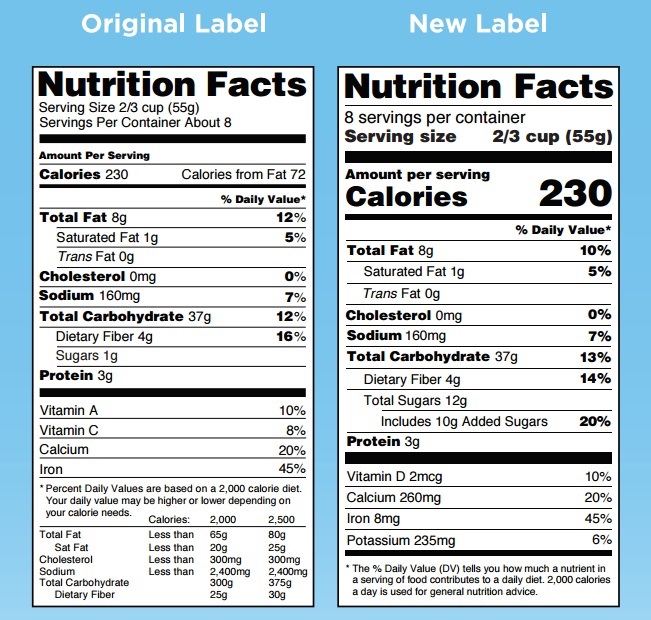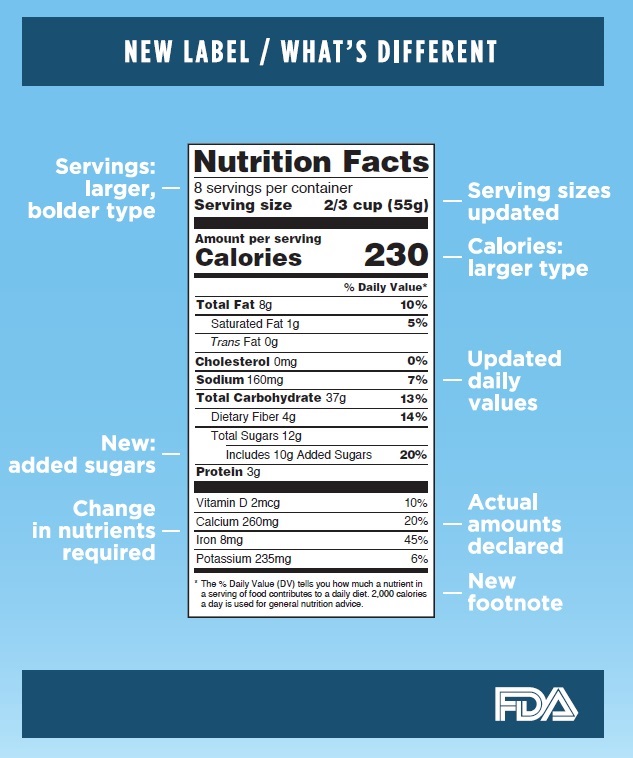March 23, 2020 by Amy Kimberlain
‘Added Sugars’ on U.S. Food Labels Set to Improve Your Health, Study Says

New rules requiring “Nutrition Facts” food and drink labels to indicate the presence of so-called added sugars could have significant health and cost-saving benefits throughout the U.S., a new study is indicating.
The updated nutrition facts panels are already starting to include how much sugar is added to packaged foods as part of a campaign by public health officials to help Americans reduce their risk of obesity, diabetes and heart disease.
Researchers determined that the labeling policy could prevent nearly 1 million cases of heart disease and diabetes, according to the report published in Circulation.
“We found that, over the next 20 years, the impact of the U.S. Food and Drug Administration’s added sugar labeling to nudge consumer choices could save nearly 1 million cases of cardiovascular disease and type 2 diabetes, $31 billion in net healthcare costs, and $62 billion in societal costs,” said study co-author Renata Micha, a research associate professor at the Friedman School of Nutrition Science and Policy at Tufts University.
Nearly two years ago, the U.S. Food and Drug Administration (FDA) announced the new label requirements to reflect the consensus of clinical findings, which have confirmed the link between poor diets and chronic diseases such as obesity and heart disease.
The new nutrition facts label is already appearing on packages sold at food markets across the country, even before they are required by the FDA. Manufacturers with $10 million or more in annual sales must switch to the new label by January 1, 2020; manufacturers with less than $10 million in annual food sales have until January 1, 2021 to comply.
“So luckily you’re already seeing the ‘added sugars’ because of this new regulation,” says Natalie Castro, chief wellness dietitian for corporate wellness at Baptist Health South Florida. “So you’ll be able to tell the difference — whether it’s a food’s natural sugar or if it’s added.”
Ms. Castro uses yogurt products containing fruits as an example.
“In a yogurt, we’re getting some natural sugar that comes from milk and some fruit as well. But you’re also getting a number of grams of added sugar which can be a lot. This helps when you’re trying to make a healthy choice. You want to look for yogurt, or any items, that has no added sugars or the least amount.”
The new Nutrition Facts label also include:
- An updated design to highlight “calories” and “servings.”
- Requirements for serving sizes that more closely reflect the amounts of food that people currently eat. By law, the Nutrition Labeling and Education Act, requires that serving sizes be based on what people actually eat.
- Declaration of grams and a percent daily value (%DV) for “added sugars” to help consumers know how much sugar has been added to the product. The FDA says: “It is difficult to meet nutrient needs while staying within calorie limits if you consume more than 10 percent of your total daily calories from added sugars, and this is consistent with the scientific evidence supporting the 2015-2020 Dietary Guidelines for Americans.”
- “Dual column” labels to indicate both “per serving” and “per package” calorie and nutrition information for certain multi-serving food products that could be consumed in one sitting or multiple sittings.


top stories












There are no comments